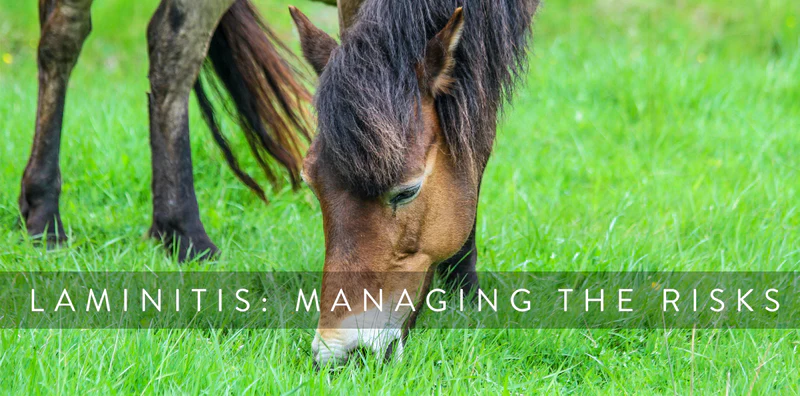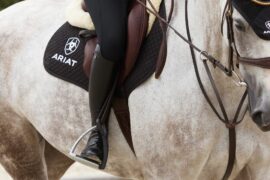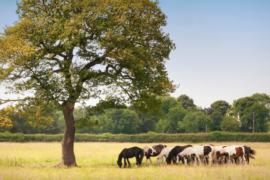What is laminitis?
Laminitis is an extremely painful condition in horses, ponies and donkeys which is caused from the disruption of blood flow to the laminae (tissue) within the hoof. The laminae becomes inflamed which causes the pedal bone to become unstable – in severe cases this can cause rotation and separation of the pedal bone altogether.
Laminitis can affect all four feet, but it is more commonly found to affect the front feet. It can be caused by a number of reasons but most commonly it is caused by diet. Laminitis is categorised into two areas – Acute laminitis which generally comes on very suddenly and Chronic laminitis which shows signs of ongoing symptoms and can affect the horse all year round (although is more commonly found during the spring).
It is important to monitor the risk factors associated with laminitis and make changes where necessary. We have compiled a list of preventative measures to help manage the risks of laminitis this season…
Restricted Grazing
Turnout management is one way you can reduce the risk of laminitis this spring… Restricting grass intake is potentially one of the most important factors when it comes to laminitis management – you can do this in many ways such as strip grazing, adding a grazing muzzle or turning out during the night when ‘water soluble carbohydrates’ are considerably lower in the grass.
Frosty Mornings

Frosty mornings can be a nightmare for horse owners, especially for those who have horses/ponies that are prone to laminitis. Avoid turning out when there has being a frost overnight… Sunny, frosty mornings cause an accumulation of ‘water soluble carbohydrates’ (WSC) in the grass – these high levels of WSCs can increase the risk factors associated with laminitis and cause no end of problems.
Don’t Over-Rug
Horses don’t feel the cold like us, they can adapt to maintain a steady body temperature if needs be. If you have a horse prone to laminitis, you can reduce the risk by not over-rugging. Instead of adding a rug, take one off – this will allow them to burn calories to maintain a steady warmth.
Increasing Exercise
It may not always be the answer, but increasing exercise can reduce the risk of laminitis. Light exercise will encourage blood flow and therefore limit laminitic signs. Of course this should always be teamed with dietary management. Increasing exercise does not require you to tack up, you can achieve this by light lunging sessions or loose schooling in an arena.
Avoid Cereal Based Feeds

Avoid feeding cereal based foods, instead opt for a balancer that is low in starch and sugar. If your horse requires extra calories, try a high fibre mix that is naturally easy to digest as well as being low in sugar and starch.
Following these precautionary measures will help you manage the risks associated with laminitis but if you feel your case is urgent you must contact your vet as soon as possible for their expert opinion.





